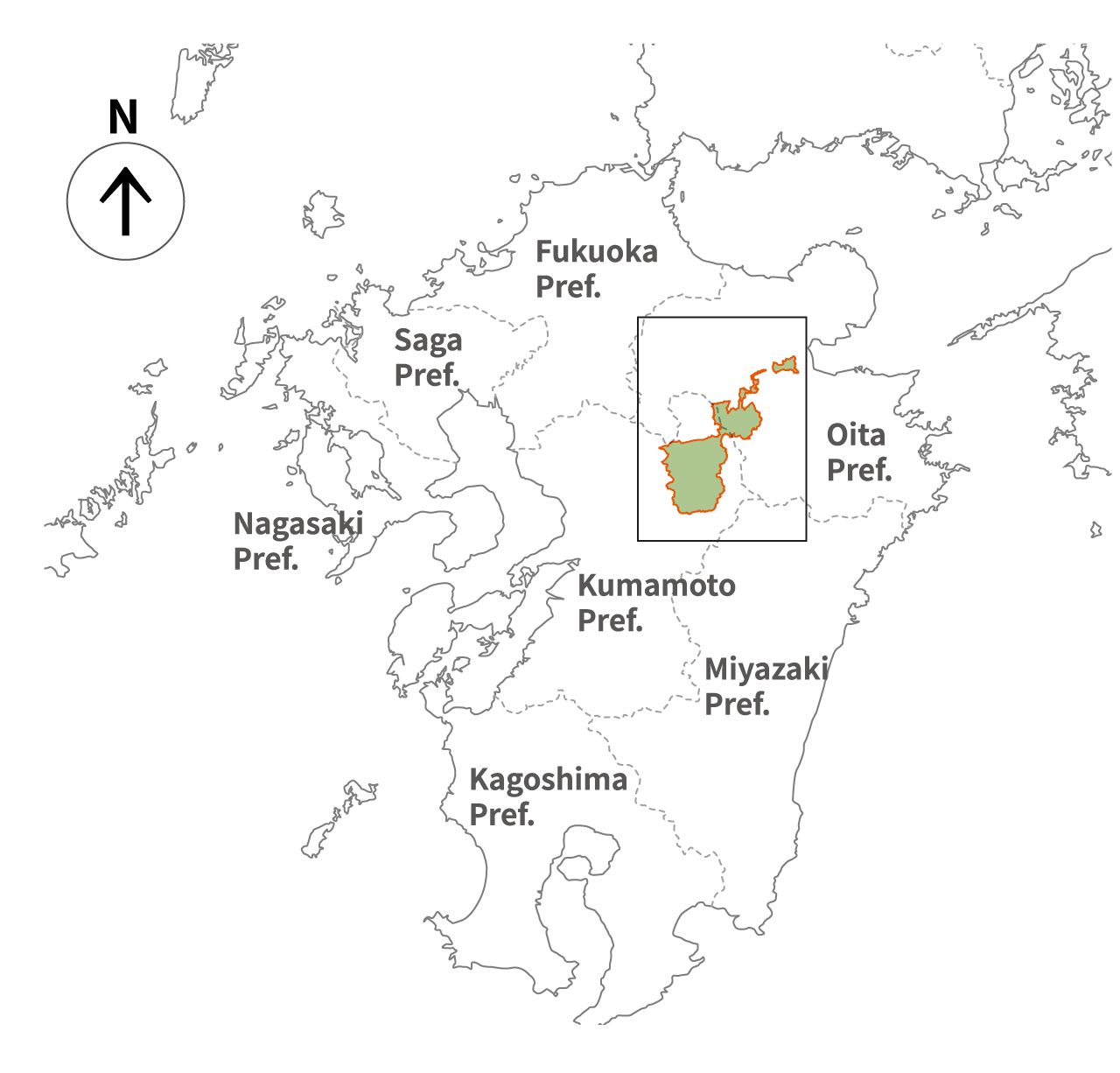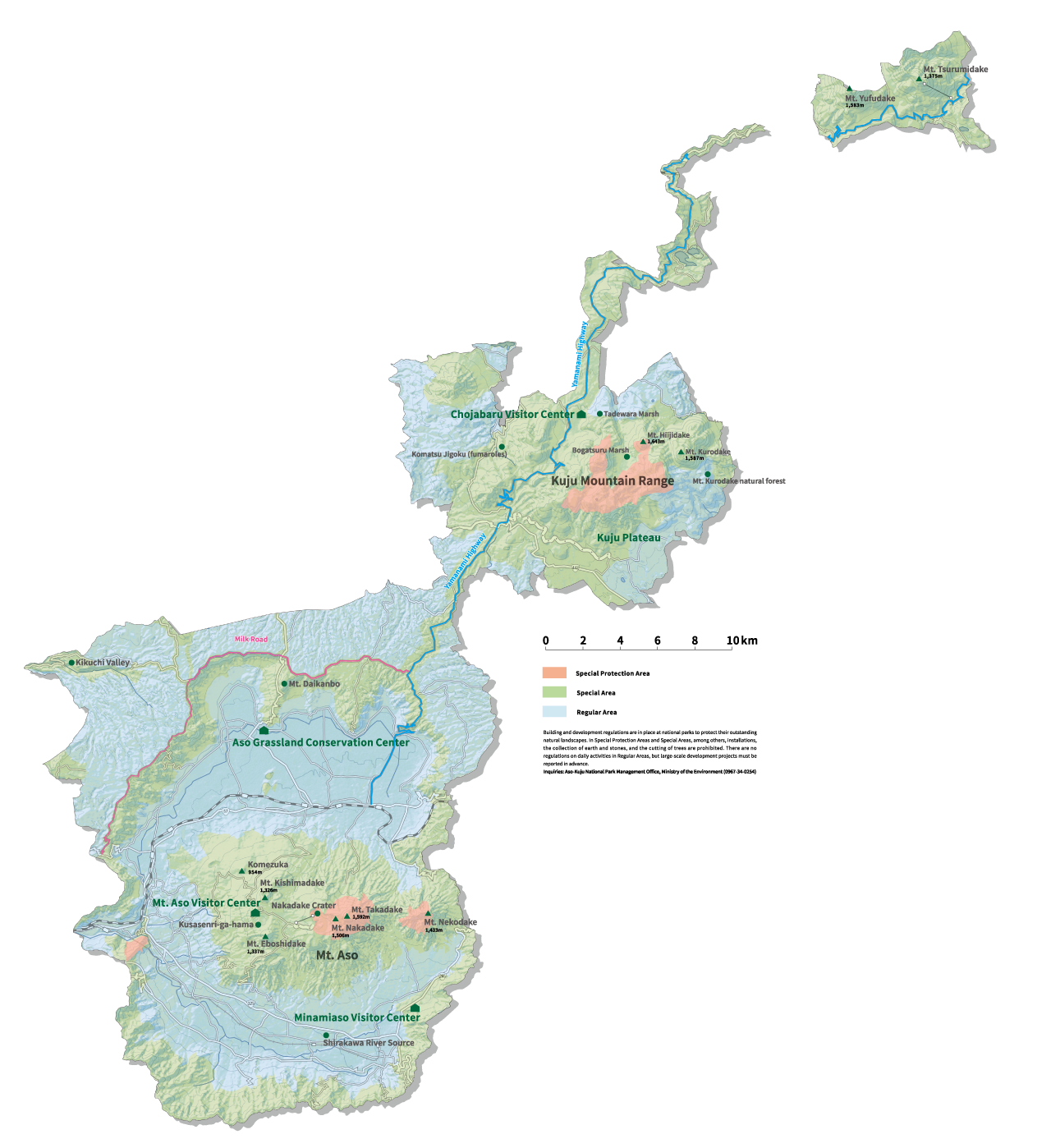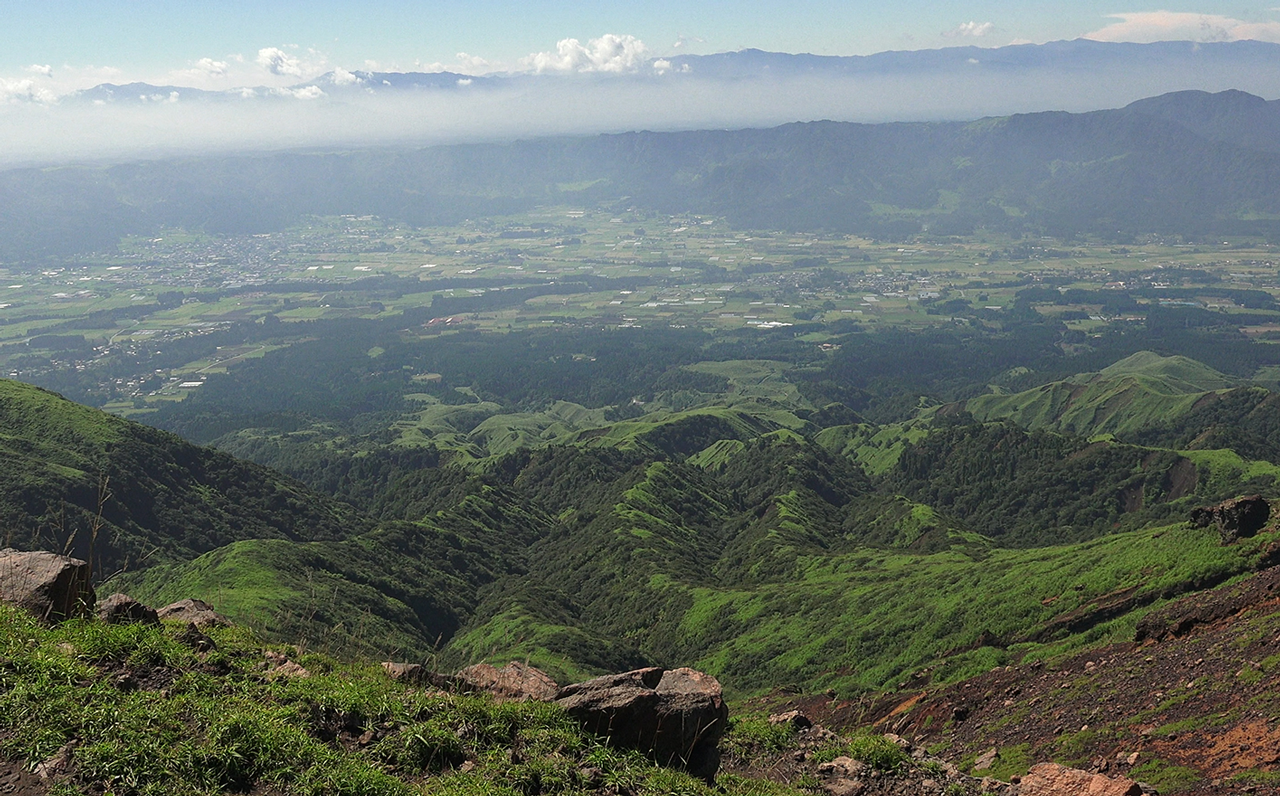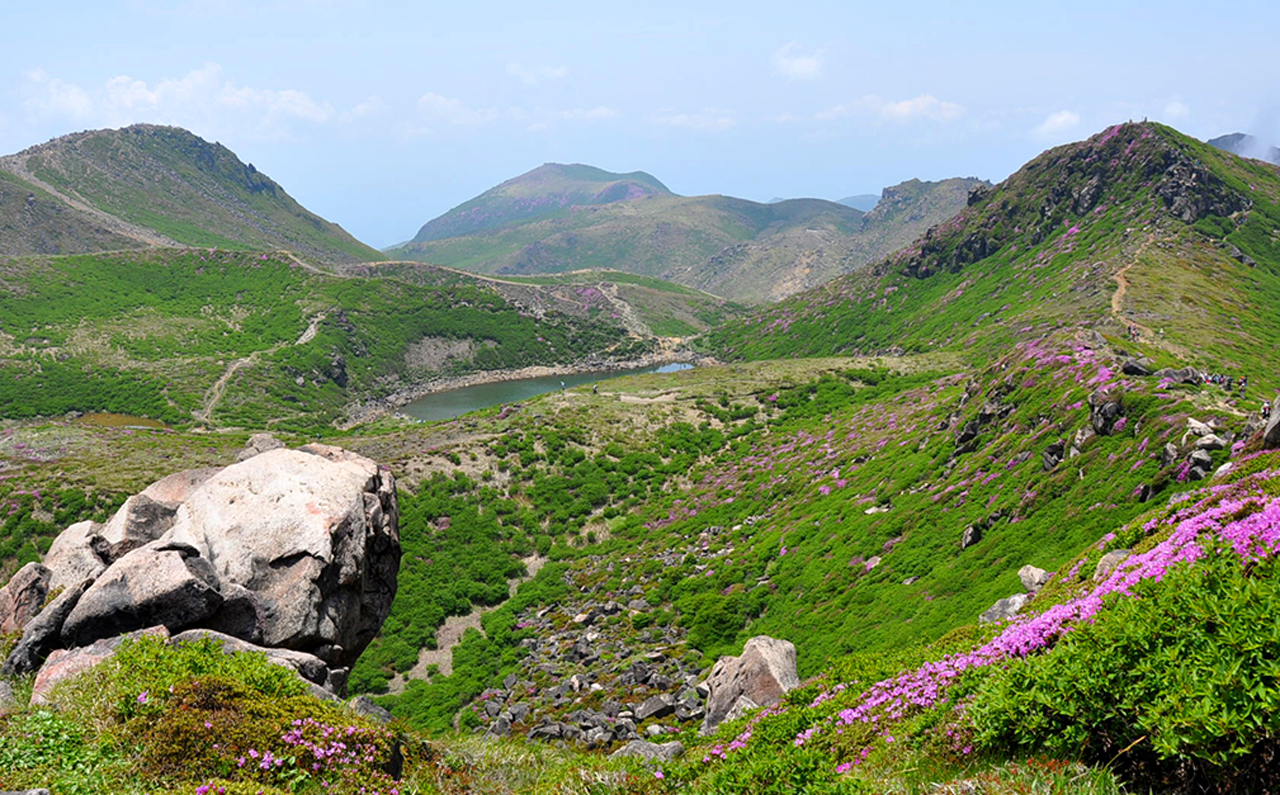Aso-Kuju National Park
Volcanos, grasslands, and water.
A spectacle of the earth, spinning tales of diverse blessings.
Aso-Kuju National Park straddles Kumamoto Prefecture and Oita Prefecture, and has a designated site area of 72,678 ha. The park has a long history and was registered in 1934, when the designation of Japan's national parks began.
It's main features are a group of volcanoes—including Mt. Aso rising above a large caldera and the Kuju mountain range located to its north—and the blessings of magnificent, smooth grasslands and abundant water in the surrounding area.

Tap to enlarge

Tap to enlarge
Building and development regulations are in place at national parks to protect their outstanding natural landscapes. In Special Protection Areas and Special Areas, among others, installations, the collection of earth and stones, and the cutting of trees are prohibited. There are no regulations on daily activities in Regular Areas, but large-scale development projects must be reported in advance.
Inquiries: Aso-Kuju National Park Management Office, Ministry of the Environment (0967-34-0254)
Aso Region

Here visitors can see a series of majestic landscapes including the crater of Mt. Nakadake emitting volcanic smoke, Komezuka with its beautiful conical shape, the expansive Kusasenri-ga-hama grassland, and the surrounding crater basins and crater rims. From Mt. Daikanbo one can take in a sweeping view of the five peaks of Aso, broad grasslands, and the Aso valley covered with rice paddies.
Volcanoes of Aso
Aso has one of the largest calderas in the world, extending about 25 km north to south and about 18 km east to west. It is composed of a central volcanic cone group made up of the five peaks of Aso, including the highest Mt. Takadake (1,592 m), as well as the surrounding crater basins and rims. The Nakadake Crater is one of the world's few active volcanoes where ordinary tourists can view the crater.
Grasslands of Aso
An extensive grassland landscape, home to numerous plants, surrounds the central volcanic cone group and the crater rims, and one can view pastoral scenes of the grazing cows and horses which are specialties of Aso. On these grasslands, noyaki (prescribed burning) is carried out when spring comes. This practice has continued for more than 1,000 years to keep the grassland from turning into forest.
Water of Aso
The distinguishing characteristic of the geological strata of Aso is the deposition of a sandy gravel layer, which water can easily permeate, on top of hard bedrock. Abundant groundwater stored in this sandy gravel layer feeds more than 1,500 springs, and this bounty of water keeps Aso moist. The rich subsoil waters which grace the Kikuchi Valley are based on the same principle.
Kuju, Yufu/Tsurumi Region

Throughout this region, you can see unique volcanic landscapes with sulfuric steam rising from vents in the earth. Other highlights among the many things to see and do here include vast grasslands such as Kuju Plateau and Handa Plateau, and scientifically important marshlands like Tadewara Marsh and Bogatsuru Marsh. From Mt. Tsurumidake and Mt. Yufudake, you can enjoy panoramic views stretching from the Kuju mountain range to Beppu Bay.
Kuju Mountain Range
Visitors can enjoy varied volcanic landscapes formed by a series of lava domes with an elevation of around 1,700 m, centering on Mt. Nakadake, the highest peak at 1,791 m. In addition to unique volcanic landscapes with sulfuric steam rising from vents in the earth, there are also expansive grasslands nearby, including Kuju Plateau and Handa Plateau.
Bogatsuru Marsh, Tadewara Marsh
Transitional marshes formed by areas of natural spring water at the foot of Mt. Kuju, these are among the largest transitional marshes in Japan formed in mountainous regions. Both are registered under the Ramsar Convention on Wetlands of International Importance. On Mt. Hiijidake, which boasts panoramic views of Bogatsuru Marsh, in early spring you can see Kyushu azalea colonies extending along the mountaintops.
Mt. Yufudake, Mt. Tsurumidake
Mt. Yufudake, which looms over the town of Yufuin, is known as Bungo-Fuji due to its beautiful shape, and its mountainsides are covered in spectacular autumnal leaves in fall. At Mt. Tsurumidake, which directly overlooks Beppu Bay, you can enjoy the changing of the seasons in all their glory, with Kyushu azaleas in spring, cool summers, autumnal leaves in fall, and rime ice in winter.
Find out more about Aso-Kuju National Park at the facilities below
Minamiaso Visitor Center
Minamiaso Visitor Center introduces visitors to the wonders of Aso, and provides opportunities to enjoy the area's nature. Stop by at the neighboring Aso Wild Plant Garden to enjoy seasonal wildflowers, wild birds, insects, and other living creatures!
Entry is free.
Aso Grassland Conservation Center
Aso Grassland Conservation Center consists of two facilities: Grassland Education Center and Grassland Information Center. A fun place to come and learn about Aso's grasslands and meet people, the Center is a hub for a range of activities relating to grasslands.
Entry is free.
Chojabaru Visitor Center
In addition to easy-to-understand exhibits on Kuju’s natural environment, including models, specimens, photos, and videos, Chojabaru Visitor Center also provides information on climbing the Kuju mountain range. It is connected directly to a board walk running through Tadewara Marsh, allowing visitors to experience the area’s four seasons at close quarters.
Entry is free.

